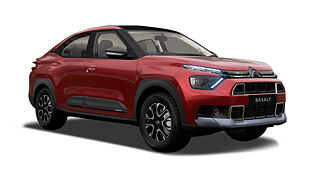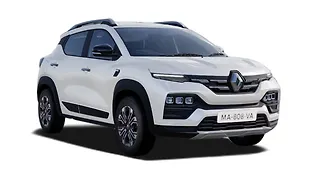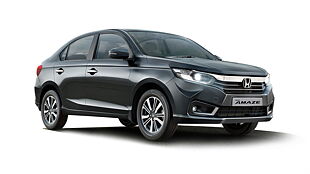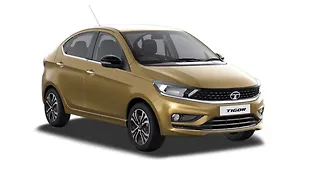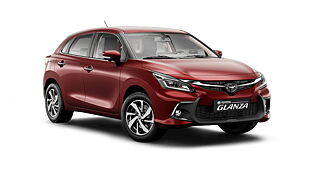Ford EcoSport [2013-2015] Titanium 1.0 Ecoboost
|Rate & Win
- EcoSport [2013-2015]
- Specs & Features
- Variants
- Colours
- User Reviews
discontinued
Variant
Titanium 1.0 Ecoboost
City
Show price in my city
Rs. 9.31 Lakh
Last Recorded PriceFord EcoSport [2013-2015] Titanium 1.0 Ecoboost Review
The Ford EcoSort has been of the most highly anticipated cars of the year and has taken the motoring world by storm. We get behind the wheel of the 1.0-litre Ecoboost engined version to find out what all the the compact crossover is really all about.
Introduction
Exterior
Interiors
Engine
Ride and handling
Specifications & Features
- Specifications
- Features
- Specifications
- Features
Specifications
Engine & Transmission
- Engine999 cc, 3 Cylinders Inline, 4 Valves/Cylinder, DOHC
- Engine Type1.0L Ecoboost (Petrol)
- Fuel TypePetrol
- Max Power (bhp@rpm)123 bhp @ 6000 rpm
- Max Torque (Nm@rpm)170 Nm @ 1400 rpm
- Mileage (ARAI)18.9 kmpl
- DrivetrainFWD
- TransmissionManual - 5 Gears
- Turbocharger / SuperchargerTurbocharged
- Valve/Cylinder (Configuration)4, DOHC
Dimensions & Weight
- Length3999 mm
- Width1765 mm
- Height1708 mm
- Wheelbase2520 mm
- Ground Clearance200 mm
- Kerb Weight1258 kg
Capacity
Suspensions, Brakes, Steering & Tyres
Features
Exterior
Braking & Traction
Safety
Comfort & Convenience
Lighting
Locks & Security
Doors, Windows, Mirrors & Wipers
Entertainment, Information & Communication
Storage
Seats & Upholstery
Instrumentation
Manufacturer Warranty
Other EcoSport [2013-2015] Variants
| Variants | Price | Specifications | |
|---|---|---|---|
Rs. 9.31 Lakh | 5 Person, FWD, 170 Nm, 200 mm, 1258 kg, 346 litres, 5 Gears, 1.0L Ecoboost (Petrol), No, 52 litres, No, No, Front, 3999 mm, 1765 mm, 1708 mm, 2520 mm, 170 Nm @ 1400 rpm, 123 bhp @ 6000 rpm, Yes, Yes (Automatic Climate Control), Front & Rear, 1, No, 0, No, No, No, Yes, 0, 5 Doors, 18.9 kmpl, Petrol, Manual, 123 bhp | Get Offers from Dealers |
Similar Cars
Explore Used Ford Ecosport
Colors
Kinetic Blue
Panther Black
Sea Grey
Mars Red
Moondust Silver
Chill Metallic
Diamond White
View More Colours
Reviews
- (11 Ratings) 11 Reviews
2.9/5
- Feaverate carIt's good car and having already features.like air begs 6 having.and adjustable staring.adjustable drivers seat and fantastic music system and control on staring.seats are are also comfatable and ecoboos6engine have good milage also. It's good to drive in city as well highways also.car is also looking good.Rating parameters(out of 5)5
Exterior
5Comfort
5Performance
5Fuel Economy
5Value For Money
About the ReviewerPurchase UsedDriven forFew thousand kilometersRead MoreWas this review helpful?02 - DisappointedIs was wondering if am i the only one complaining to Ford India about the loud rattling noise heard from my engine front side with Ac on, it almost sounds like a 5 year old car and as if my number plate is loose. When i went to the Service center and listened to the Demo vehicle it sounded the same, and the team says its normal noise, it may be normal to them but not for me who purchased the topline and Eco boost supposed to be an award winning car. Unfortunately during my purchase i was out of the country and didnt get enough time to check the vehicle before the purchase, no other cars of mine make this noise not even my 7 year old ford fiesta and my 5 year old Endeavour. I am on the verge of selling it off if my problem is not solved its 1 month old and driven only few hundered kms. Im requesting all ford ecosport owner to share their review on the same as i am taking this up with Ford India by all means. Kindly lodge in your complaint to custmail@ford.com if we all face a commom issue.Love the exterior and interior.I hate the rattling noise from the engine with Ac onRating parameters(out of 5)4
Exterior
4Comfort
1Performance
4Fuel Economy
4Value For Money
About the ReviewerPurchase NewDriven forFew hundred kilometersRead MoreWas this review helpful?10 - Manish DesaiExterior Ok. Interior (Features, Space & Comfort) Lot of squeaky sound internally, possible the internal fittings are not designed properly. Engine Performance, Fuel Economy and Gearbox Clutch and gear problems. Clutch plate had to replaced after 3500 kms, but the problem is still persisting and I have to haggle with Ford India to attend to the vehicle. Absolutely poor customer service. There are issues around their dealer SC Ford Goregaon and no action taken by Ford India. Final Words Beware! Think twice before buying Ford India vehicle. Don't expect any service from Ford India. Very few dealers in Mumbai and in last three months, I have to send my vehicle to workshop for clutch/gear problems at least 3 times and the problem remains unresolved. I must have spent over Rs 4000 only for sending the vehicle to workshop. Areas of improvement Customer service and quality of parts. Will Ford Company treat a customer in US in the same manner as in India?Cannot say as there more problemsPoor After Sales Service, Clutch and Gear problems, flimsy material used. Service Standards Poor,Rating parameters(out of 5)3
Exterior
3Comfort
1Performance
1Fuel Economy
1Value For Money
About the ReviewerPurchase NewDriven forFew thousand kilometersRead MoreWas this review helpful?31
- Home
- Ford Cars
- EcoSport [2013-2015]
- Titanium 1.0 Ecoboost

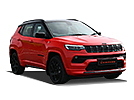


![Ford EcoSport [2013-2015] Titanium 1.0 Ecoboost Ford EcoSport [2013-2015] Titanium 1.0 Ecoboost](https://imgd.aeplcdn.com/664x374/cw/cars/ford/ecosport.jpg?q=80)
![Ford EcoSport [2013-2015] Front View Ford EcoSport [2013-2015] Front View](https://imgd.aeplcdn.com/664x374/ec/97/E4/10836/img/m/Ford-EcoSport-Front-view-18565_l.jpg?v=201711021421&q=80)
![Ford EcoSport [2013-2015] Rear View Ford EcoSport [2013-2015] Rear View](https://imgd.aeplcdn.com/664x374/ec/5E/99/10463/img/l/Ford-Ecosport-Rear-view-16977.jpg?v=201711021421&q=80)
![Ford EcoSport [2013-2015] Rear View Ford EcoSport [2013-2015] Rear View](https://imgd.aeplcdn.com/664x374/ec/5E/99/10463/img/l/Ford-Ecosport-Rear-view-16975.jpg?v=201711021421&q=80)
![Ford EcoSport [2013-2015] Rear View Ford EcoSport [2013-2015] Rear View](https://imgd.aeplcdn.com/664x374/ec/5E/99/10463/img/l/Ford-Ecosport-Rear-view-16974.jpg?v=201711021421&q=80)
![Ford EcoSport [2013-2015] Rear View Ford EcoSport [2013-2015] Rear View](https://imgd.aeplcdn.com/664x374/ec/5E/99/10463/img/l/Ford-Ecosport-Rear-view-16973.jpg?v=201711021421&q=80)
![Ford EcoSport [2013-2015] Rear View Ford EcoSport [2013-2015] Rear View](https://imgd.aeplcdn.com/664x374/ec/5E/99/10463/img/l/Ford-Ecosport-Rear-view-16971.jpg?v=201711021421&q=80)
![Ford EcoSport [2013-2015] Rear View Ford EcoSport [2013-2015] Rear View](https://imgd.aeplcdn.com/664x374/ec/5E/99/10463/img/l/Ford-Ecosport-Rear-view-16970.jpg?v=201711021421&q=80)


